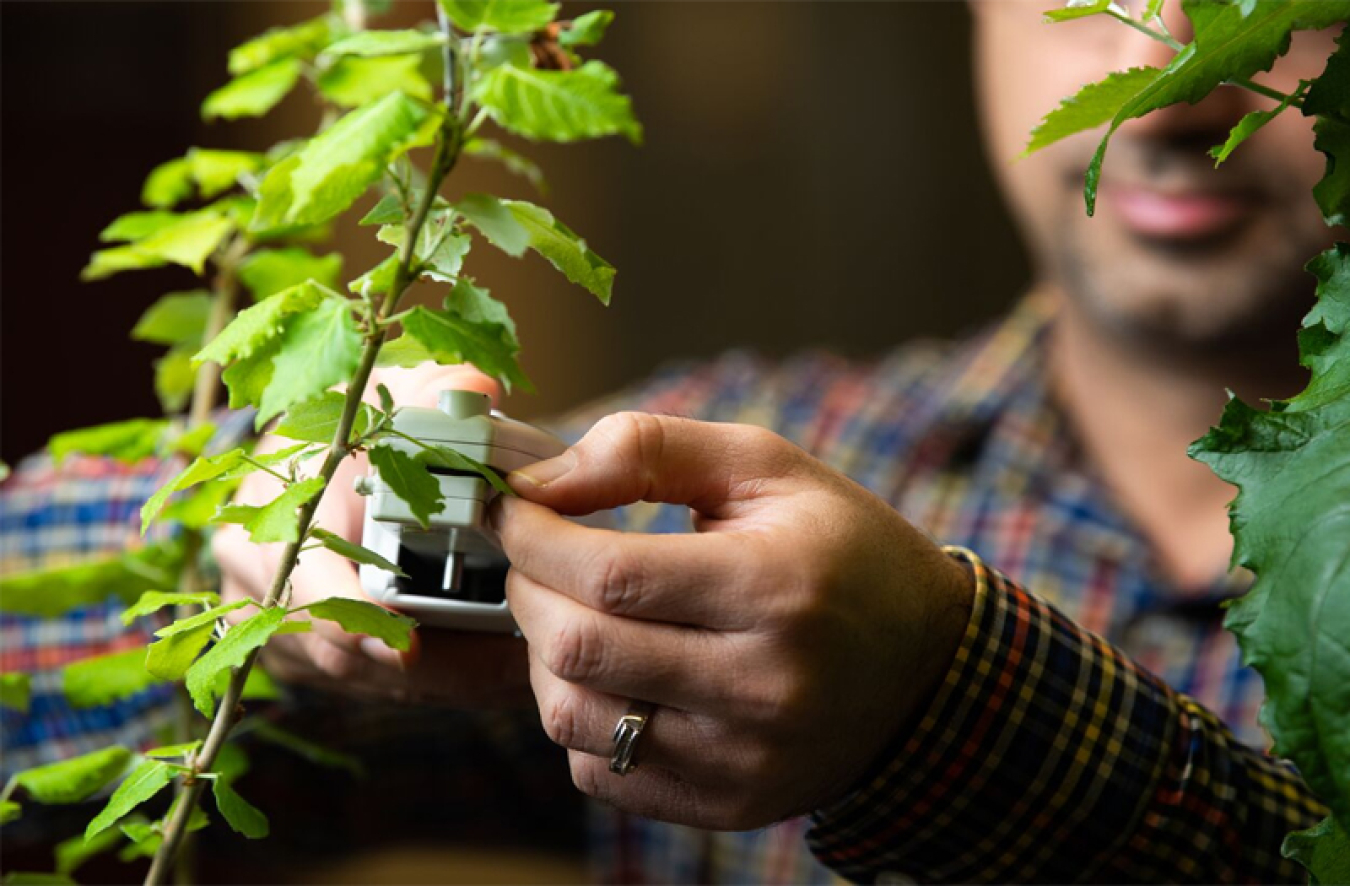To better understand environmental systems, scientists supported by DOE’s Office of Science are studying plant roots and the surrounding soil.
May 23, 2023
If you’re standing on dirt, there’s a complex network of interactions right below your feet. Plant roots and the surrounding soil host a huge variety of organisms and processes. The organisms include incredible numbers of microbes, including bacteria, fungi, and viruses. These organisms break down organic matter (like dead leaves) and store carbon in the soil. This underground space influenced by plant roots is called the rhizosphere. Even though this area has huge effects on climate and environmental systems, there’s much that scientists don’t know about it.
Researchers supported by the Department of Energy’s Office of Science study the rhizosphere so we can better understand these processes and their effects on Earth’s systems. Our Environmental Molecular Sciences Laboratory (EMSL) user facility hosted by Pacific Northwest National Laboratory has a whole area devoted to studying plant systems and specifically the rhizosphere region. Researchers grow and analyze various plant species to better understand how they’re affected by environmental changes and the soil surrounding them. They examine interactions between roots, the soil, and microbes to figure out the effects of processes controlled by plant roots. These processes can influence how resilient plants are and how carbon, nutrients, and minerals cycle through biological and chemical systems. For example, scientists look at the chemical signals sent between roots and microbes.
EMSL’s unique resources make this research possible. The facility has equipment that allows scientists to grow plants under very specific environmental conditions. A tool called a “rhizosphere on a chip” mimics rhizospheres under the soil while giving scientists the control they need in the lab. Other tools allow them to analyze the molecules in root tissue, the chemicals roots give off, and the associated microbes.
Shannon Brescher Shea

Shannon Brescher Shea ([email protected]) is the social media manager and senior writer/editor in the Office of Science’s Office of Communications and Public Affairs. She writes and curates content for the Office of Science’s Twitter and LinkedIn accounts as well as contributes to the Department of Energy’s overall social media accounts. In addition, she writes and edits feature stories covering the Office of Science’s discovery research and manages the Science Public Outreach Community (SPOC). Previously, she was a communications specialist in the Vehicle Technologies Office in the Office of Energy Efficiency and Renewable Energy. She began at the Energy Department in 2008 as a Presidential Management Fellow. In her free time, she enjoys bicycling, gardening, writing, volunteering, and parenting two awesome kids.

